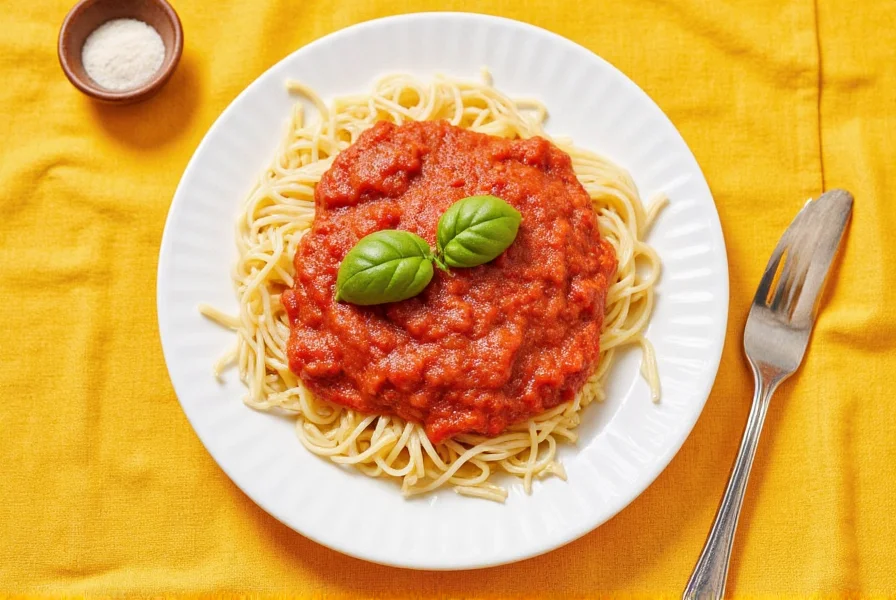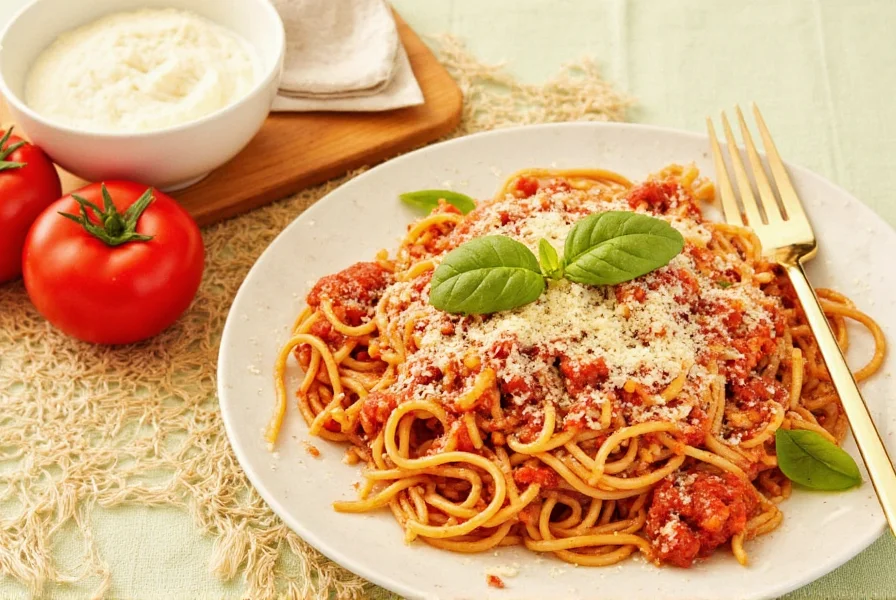Let’s face it: the secret to a memorable spaghetti dish isn’t just in the noodles—it's in the sauce. And even more specifically, it's in the seasonings you use. Whether you're a seasoned chef or someone who’s just starting to fall in love with cooking, mastering the art of seasoning your spaghetti sauce can transform your meals from “just okay” to absolutely unforgettable.
In this post, we’re diving deep into the world of spice basics, focusing exclusively on the best seasonings for spaghetti sauce. You’ll discover not only what to use but also how and why certain spices work together like magic. Plus, we’ve got some handy charts, product recommendations, and pro tips to help you elevate your pasta game.
Table of Contents
- Why Seasoning Matters in Spaghetti Sauce
- Top 10 Seasonings Every Spaghetti Sauce Needs
- Spice Combinations That Work Like Magic
- Buying Guide: How to Choose the Best Seasonings
- Pro Tips for Using Dried vs. Fresh Herbs
- Conclusion
Why Seasoning Matters in Spaghetti Sauce
Think of your spaghetti sauce as a blank canvas. Sure, you’ve got tomatoes, maybe some garlic, olive oil, and onions—but without seasoning, it’s just... bland. Adding the right spices brings out the natural flavors, balances acidity, adds warmth, and gives that depth we all crave in a great pasta dish.
Seasoning is more than just salt and pepper. It’s about layering different herbs and spices to build complexity. Some enhance sweetness, others add earthiness, and a few bring that spicy kick that makes your taste buds dance. Let’s explore the top ones that every spaghetti lover should know.
Top 10 Seasonings Every Spaghetti Sauce Needs
We’ve compiled a list of the top 10 must-have seasonings that belong in any classic or modern spaghetti sauce. These are based on traditional Italian cuisine, flavor chemistry, and real-world testing by home cooks and chefs alike.
- Basil – Sweet, aromatic, slightly peppery
- Oregano – Earthy, bold, perfect for hearty sauces
- Garlic Powder (or fresh garlic) – Adds savory depth
- Thyme – Subtle lemony notes, great for simmered sauces
- Parsley – Brightens up the final dish
- Red Pepper Flakes – For a gentle heat boost
- Fennel Seeds – Slight licorice flavor, common in Italian sausage sauces
- Bay Leaf – Adds subtle background warmth, remove before serving
- Marjoram – Milder cousin of oregano, great for lighter sauces
- Nutmeg – Surprisingly delicious in meat-based ragùs
Quick Reference Table: Flavor Profiles at a Glance
| Spice | Main Flavor Note | Best Used In |
|---|---|---|
| Basil | Sweet, aromatic | Light red sauces, garnish |
| Oregano | Earthy, bold | Tomato-based sauces |
| Garlic Powder | Savory, umami | All types of pasta sauces |
| Thyme | Herbaceous, citrusy | Slow-cooked sauces |
| Parsley | Fresh, bright | Garnish after cooking |
| Red Pepper Flakes | Spicy, sharp | Mixed into sauces for heat |
| Fennel Seeds | Subtle anise/licorice | Meat-based sauces |
| Bay Leaf | Woody, warm | Simmered sauces, removed later |
| Marjoram | Mild, floral | Creamy or light tomato sauces |
| Nutmeg | Warm, nutty | Meat ragùs, béchamel sauces |
Spice Combinations That Work Like Magic
While each spice shines individually, combining them thoughtfully can take your spaghetti sauce to another level. Here are some tried-and-true pairings:
- Basil + Oregano: The classic Italian duo—perfect for standard marinara or pizza sauce bases.
- Garlic + Red Pepper Flakes: A staple combo that offers depth and heat.
- Fennel Seeds + Thyme + Bay Leaf: Ideal for meat sauces or Sunday gravy.
- Parsley + Marjoram: Light, refreshing, and perfect for finishing a delicate cream sauce.
- Nutmeg + Nutmeg... Wait, no—we meant Nutmeg + Cloves! Especially during fall/winter months, this blend adds cozy warmth to slow-cooked sauces.
When to Layer Spices During Cooking
Timing matters when adding spices. Here's a general guide:
- Dried herbs (oregano, basil): Add early in the cooking process so they have time to bloom in oil and infuse the sauce.
- Fresh herbs (basil, parsley): Add at the very end or as a garnish to preserve their brightness.
- Heat-inducing spices (red pepper flakes): Add early to mellow out the heat slightly, or late if you want a sharper kick.
- Aromatic seeds (fennel, cumin): Toast them first in oil to unlock their flavor potential.
- Bay leaf & thyme: Simmer with the sauce and remove before serving.
Buying Guide: How to Choose the Best Seasonings

Choosing the right spices can be overwhelming with so many brands and options available. Here's a breakdown of things to look for when shopping for seasonings to use in spaghetti sauce:
What to Look For
- Freshness: Check expiration dates. Spices lose potency over time.
- Whole vs. Ground: Whole spices (like fennel seeds) stay fresh longer. Grind as needed for maximum flavor.
- Organic Options: If you prefer fewer additives, opt for certified organic varieties.
- Source Transparency: Brands that disclose where they source ingredients tend to offer higher quality products.
- Storage: Keep your spices in a cool, dark place away from heat and moisture to prolong shelf life.
Recommended Products
Here are some highly rated seasoning products perfect for spaghetti sauce:
| Product | Features | Use Case |
|---|---|---|
| Mrs. Dash Original Blend | No added salt, blends well in marinara | Great for low-sodium diets |
| Simply Organic Italian Seasoning | Organic, robust flavor, includes oregano and basil | Ideal for simmered sauces |
| Morton & Bassett Garlic Powder | Consistent texture, potent aroma | Everyday base for most sauces |
| Frontier Co-op Fennel Seed | Perfectly toasted flavor, enhances meat sauces | Italian sausage ragù lovers |
| McCormick Bay Leaves | Authentic flavor, easy to find | Add depth to long-cooked sauces |
Pro Tips for Using Dried vs. Fresh Herbs

One of the most common questions when seasoning spaghetti sauce is: Should I use fresh or dried herbs? The answer? It depends!
Pros and Cons of Each
| Type | Pros | Cons |
|---|---|---|
| Fresh | Bright, vibrant flavor; ideal for garnishing | Short shelf life; can be expensive |
| Dried | Concentrated flavor; lasts months | Can become stale if stored improperly |
When to Use What
- Dried herbs: Better for long-simmered sauces. They release flavor slowly and stand up well to heat.
- Fresh herbs: Best for last-minute additions or drizzling over finished dishes.
- Tip: When substituting fresh for dried, use triple the amount of fresh (since dried are more concentrated).
Conclusion
Mastering the seasoning of your spaghetti sauce is one of the simplest yet most impactful ways to improve your cooking. With the right mix of herbs and spices—and a little bit of knowledge—you can make restaurant-quality sauces right in your own kitchen.
Whether you're going for classic Italian simplicity or a bold, spicy twist, don't be afraid to experiment. Taste as you go, adjust the balance, and above all—have fun with it. After all, food is about joy, connection, and sharing great flavors with the people you love.
Now go ahead, dust off those spice jars, and let your spaghetti sauce sing!










 浙公网安备
33010002000092号
浙公网安备
33010002000092号 浙B2-20120091-4
浙B2-20120091-4